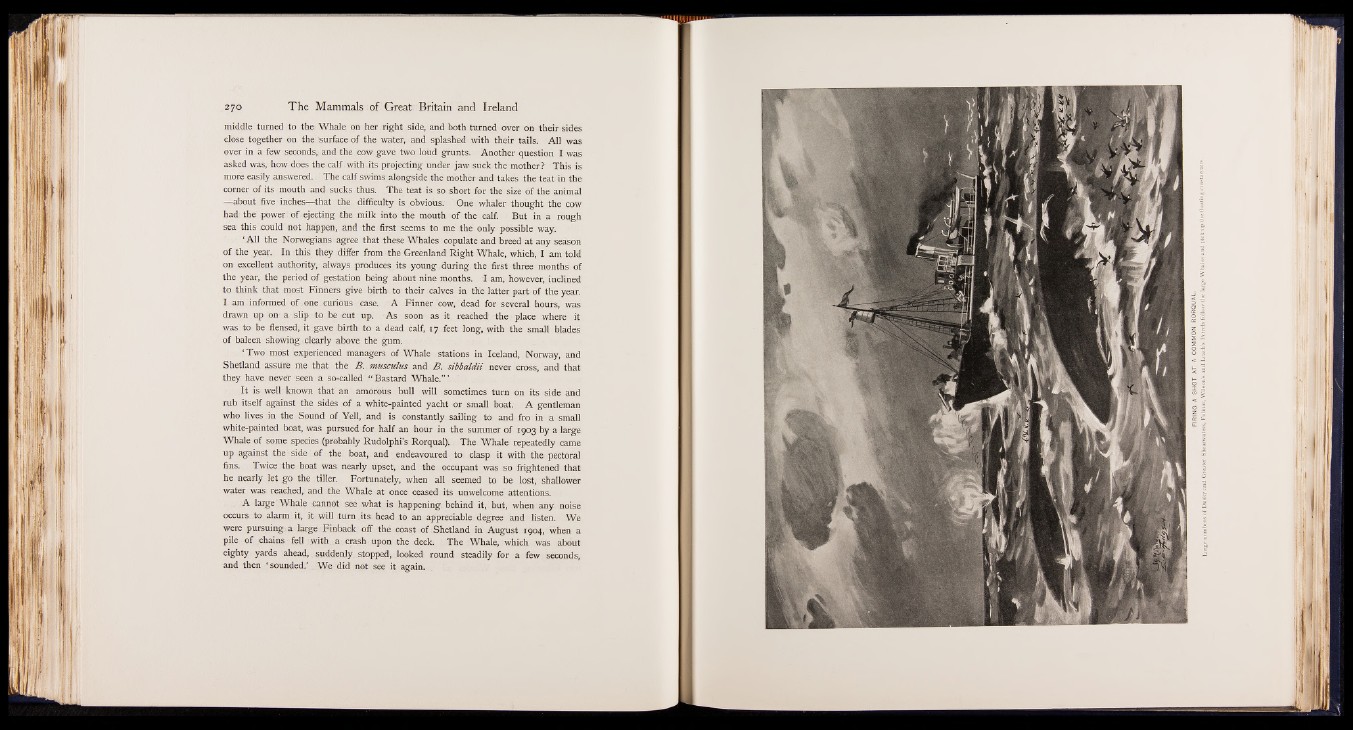
middle turned to the Whale on her right .side, and both turned over on their sides
close together on the surface of the water, and splashed with their tails. All was
over in a few seconds,: and the cow gavé two loud grunts. Another question I was
asked was, how dóes the calf with .its projecting under jaw suck the mother? This is
more easily answered. : The calf swims, alongside the mother and takes the teat in the
corner of its mouth and sucks thus. The teat is so short for the size of the animal
— about five inches— that the difficulty is obvious. One whaler thought the cow
had the power of ejecting the milk into the mouth , of the calf. But in a rough
sea this .could not happen, and the first seems to me the only possible way.
‘ All the Norwegians agree that these Whales copulate and breed at any season
of the year. In this they differ from the Greenland Right Whale, which, I am told
on excellent authority, always produces, its young .during the first three months of
the year, the period of gestation being about nine months. I am, however, inclined
to think that most Pinners give birth to their , calves in the latter part of the year.
I am informed of one curious case. A Finner cow, dead for several hours, was
drawn up on a slip to be cut up. As soon as it reached the place where it
was: to be flensed, it gave birth to a dead calf, 17 feet long, with the small blades
of baleen showing : clearly above the gum.
‘ Two móst experienced managers of Whale stations in Iceland, Norway, and
Shetland assure me that the B . musculus and B . sibbaldii never cross, and that
they have, never seen a so-called “ Bastard Whale.” ’ .
It is well: known that an amorous bull will sometimes turn on its side and
rub itself against the sides of a white-painted yacht or small boat. A gentleman
who lives.in the Sound of.Yell, and; is constantly sailing to and fro in a small
white-painted boat, was pursued for half an hour in the summer of 1903 by a large
Whale of some species (probably Rudolphi’s Rorqual). The Whale repeatedly came
up against the side of the boat, and endeavoured to clasp it with the pectoral
fins. Twice the boat was nearly upset, and the occupant was so frightened that
he nearly let go the tiller. Fortunately, when all seemed to be lost, shallower
water was reached, and the Whale at once ceased its unwelcome attentions.
A large Whale cannot seé. what is happening behind it, but, when any noise
occurs to alarm it, it will turn its. head to an appreciable degree and listen. We
were pursuing a large Finback off the coast of Shetland in August 1904, when a
pile of chains fell with, a crash upon the deck. The Whale, which was about
eighty yards ahead, suddenly stopped, looked round steadily for a few seconds,
and then ‘ sounded.’ We did not see it again.